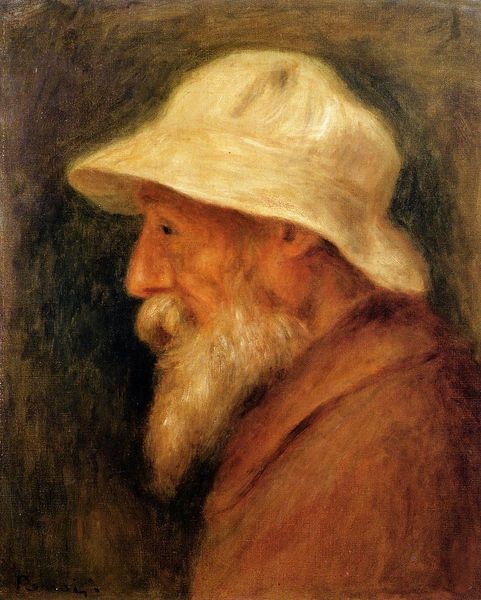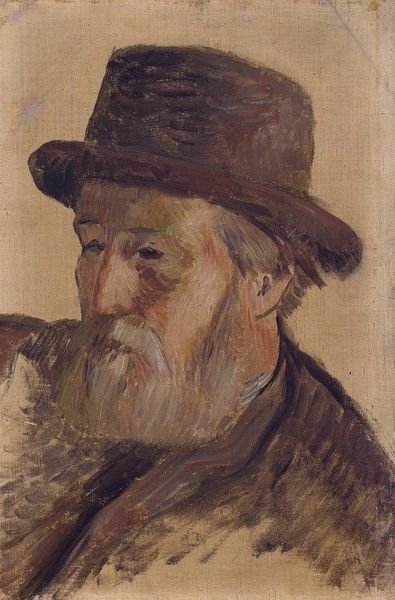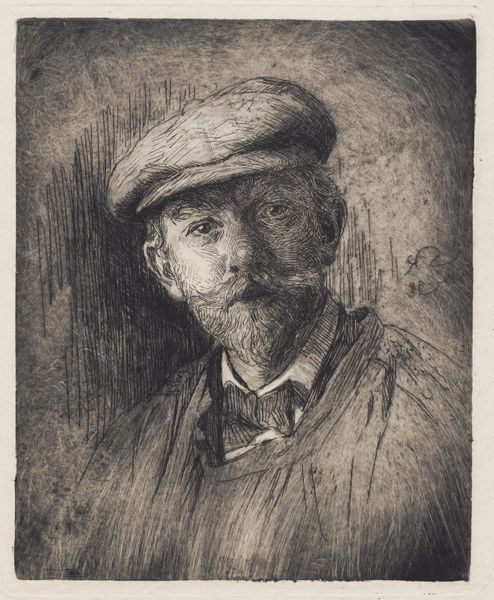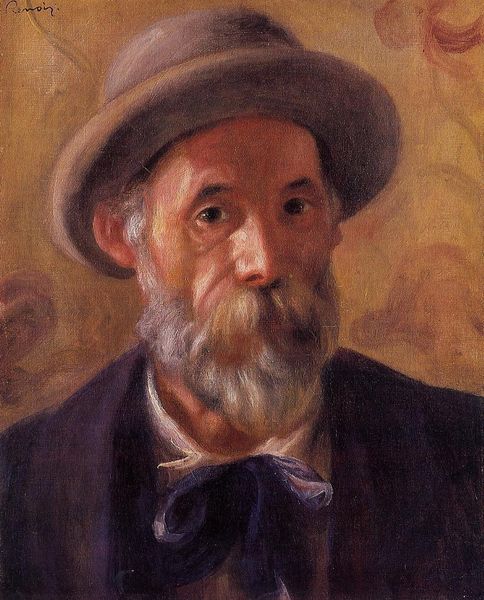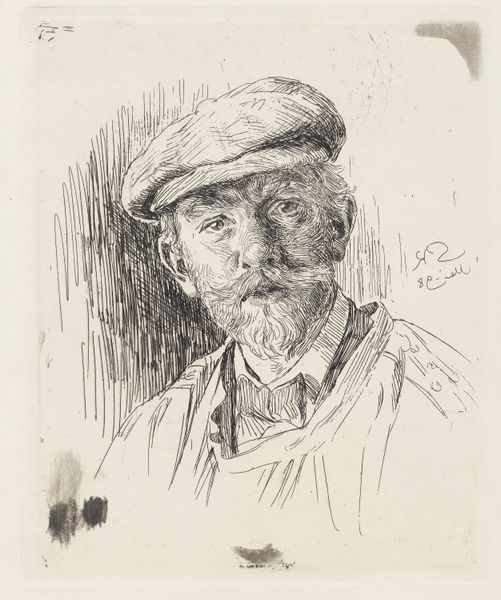
drawing, charcoal, pastel
#
portrait
#
drawing
#
self-portrait
#
impressionism
#
charcoal drawing
#
charcoal
#
pastel
#
post-impressionism
#
portrait art
Copyright: Public domain
Curator: Here we see a self-portrait rendered by Pierre-Auguste Renoir using charcoal and pastel. It's currently held in a private collection. The looseness of the rendering gives it an incredibly immediate feeling, almost like a glimpse into a private moment. Editor: That's what struck me first—its informality, really. It's raw, you see the marks, the texture of the charcoal…there’s a directness that feels so unmediated, far from the salon portraits usually associated with someone like Renoir. What do you make of its placement within Renoir's career, historically? Curator: Precisely. Renoir was an artist constantly navigating his relationship with the established art world and Impressionist innovation. Though undated, this drawing gives insight into the process, beyond what's intended for public consumption, as his Impressionist work gained prominence, pushing past societal expectations of academic technique, he made these on the side. It reveals something of the artist behind the public persona. Editor: It feels more honest somehow, right? It also puts the materiality forward—charcoal isn't paint. It has a different set of associations. What does that choice mean? Was it merely pragmatic or were these materials he returned to, did the qualities of the medium become crucial? Curator: That’s a great point. While oil paint might have signaled his status as a "serious" artist, the charcoal and pastel allow him to experiment, to sketch out ideas, to capture something quickly without the pressure of a finished piece. Also, the art market during the time greatly impacted medium and art display. What we view today, has many constraints from societal structure during art making. Editor: Constraints being societal class and wealth one would assume, in a society where material determined an artist output. Interesting how the so-called 'minor' works can actually tell you more. It adds another dimension of materiality; beyond his skill, beyond what is expected by the art institutions or critics that reinforce an ideology. These drawings highlight production. Curator: Yes, and by focusing on himself, the artist is in some way taking ownership, stepping outside of what the institutions want or expect. A political move perhaps. He's declaring that his personal vision has value beyond his official commissions. Editor: A compelling, less filtered lens into both Renoir and the broader artistic landscape of his time. I now have a new appreciation for his raw skills. Curator: It really encourages us to reconsider those traditional categories, and how societal power shifts the view of value.
Comments
No comments
Be the first to comment and join the conversation on the ultimate creative platform.
